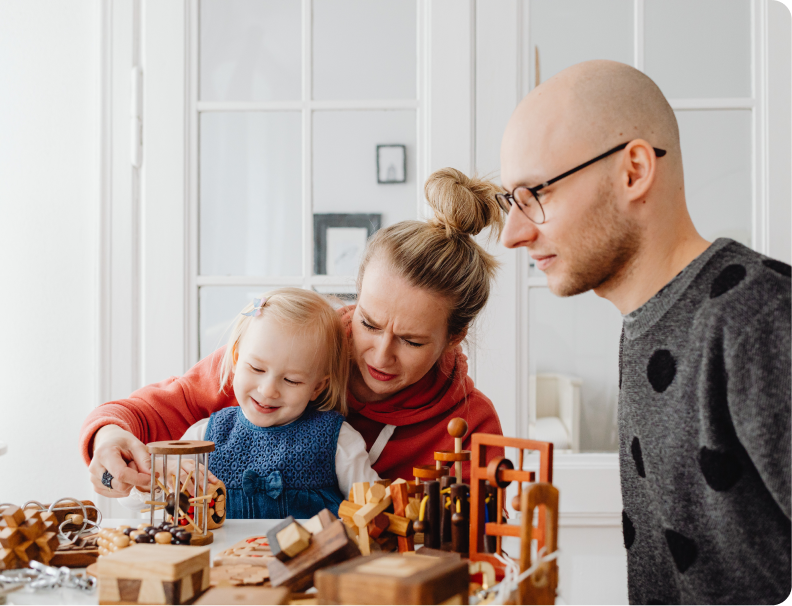
Resources & Articles



Conversation Starters
When we see our children after school and ask the typical question “What did you do in school today?” My 3 year old’s typical response is “nothing”. Turns out I wasn’t asking the right question. Read more about how to start a conversation with your 3 year old…

Language Delay or “Late Bloomer”?
How to determine if your child has a true language delay or if he/she is just a “late bloomer”?
Receptive Language:
Does your child understand language similar to those of his same-age peers? If so, studies show that these kiddos are less likely to have a delay after a year.
Use of Gestures:
Studies show that kiddos who use a wide range of gestures to communicate may be less likely to have a language delay.
Progress in Language Development:
Although your child may be slowly acquiring language, he/she should be using language in a new way frequently.



A few of my favorite toys...
Looking for toy ideas for your little one? How about toys that your child will love but will also help them develop their speech and language skills at the same time?! Here is a list of my favorites!
Bubbles
Every kid loves bubbles. Bubbles are a fun way to encourage
a child’s use of his/her oral motor cavity, as well as teaches them direction following (i.e. “Pop it with your nose!”), body parts
and more!
Jack in the Box
Any toy that promotes repetition or cause and effect is great for 6 months and up (even my 3 year old loves a jack in the box). There are so many great questions you can ask while playing.
Kitchen Toys - the language opportunities are endless!
- Teach action words (i.e. “make”, “chop”, “pour”, “mix”)
- Describing words (i.e. color, size, shape, temperature)
- Encourage play/social skills (eye contact, manners, joint attention… just to name a few)
- Following Directions
Dolls and Puppets
Imitation play where kids use dolls to reenact scenes from everyday life, is a strong communications builder. Kids can give dolls and puppets voices and personalities, two strong components of communication. Non-verbal children can manipulate the body parts to communicate meaning.

Encouraging Speech in our Daily Routine
Doing very simple actions can encourage your child’s speech and language skills. Here is a great tip:
If your child can interact with you easily, try to do something out of the ordinary and then waiting to see if you can get a reaction. For example, when getting your child dressed, put his sock on his hand, and wait to see if he communicates to you with a word, a comment, a look or a gesture to let you know that you made a mistake. Don’t be afraid to do something silly- the best interactions happen when doing something fun!




Connect with a Therapist
Reach Out to Schedule a Consultation and Learn More About Our Therapy Services


